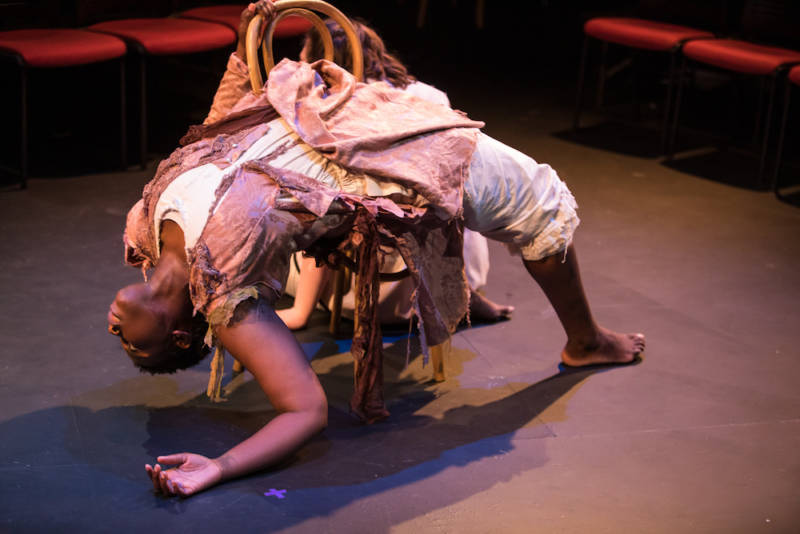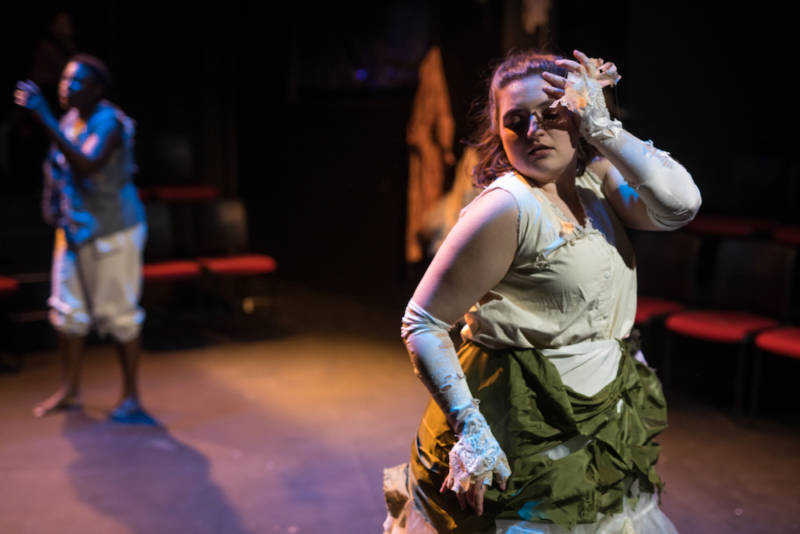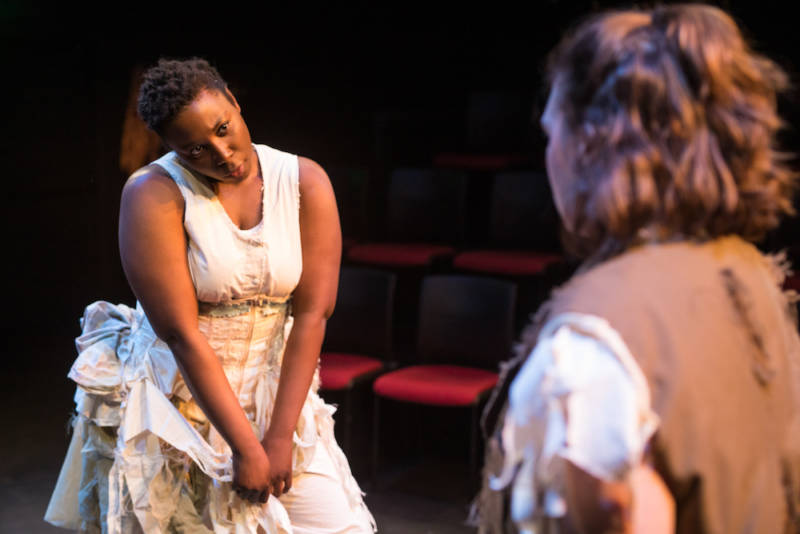Originally written in 1897 as Reigen, Arthur Schnitzler’s La Ronde is a parlor dance of seduction between ten couples, each of whom has at least more than one lover. Crossing lines of class and station, the story pairs together a wide variety of paramours: masters and servants, soldiers and prostitutes, actresses and admirers, and even a conventional husband and wife.
At Cutting Ball Theater, La Ronde is directed by new artistic director Ariel Craft, who takes source material that could otherwise be less than mythic and applies some signature twists. Craft is known for her reimagining of classical work through a modern, intersectional lens, including productions of Phèdre, an all-female adaptation of Macbeth, and a theatrical examination of Kate Chopin’s The Awakening.
In Craft’s hands, La Ronde‘s possibilities expand. Instead of the requisite ten actors, why not use just two? Instead of binary gender pairings, why not have female bodies inhabiting each role? Instead of an exhausting merry-go-round of revealed flesh and awkwardly positioned hands, why not clad the performers in almost-chaste bloomers and artfully shredded accessories (costuming by Morgan May Louie)? Why not give them chairs to hump in a steamy scene that makes chairs seem suddenly really appealing?

In a dizzying roundelay, not only does each pairing lead to the next (in the first scene, we have prostitute and soldier, in the second, soldier and housemaid, in the third, housemaid and gentleman), but the actors swap out each role in sequence as well. Painted in mostly broad strokes, each character represents a different social strata as well as a different sexual appetite. There’s Jeunée Simon’s clear-eyed prostitute, who indicates her frank lust with a hungry lick of her own hand, and Ella Ruth Francis’ languid gentleman signaling his desires with a yank of a bell cord. There’s Simon’s self-assured actress dominating Francis’ timid Count, just moments after Francis’ actress had done the same to Simon’s poet. Giggling young misses and passionate young wives, eager soldiers and bloviating husbands—each take a turn on the Cutting Ball stage.
Rather leaning into its origins as exemplar of fin de siècle decadence, Craft’s production is staged in the round, with just two chairs and a handful of thoughtfully chosen props to serve as entire households of well-appointed furniture (design by Randy Wong-Westbrooke and Adeline Smith). With audience hovering over the action on all sides, their contribution to the almost claustrophobic intimacy of the atmosphere in unmistakable. It’s as if we are witnesses to one of the play’s early, storied private performances, doubtlessly staged in the parlors of the Viennese bourgeoisie.

The actors perform their multiple roles with flirtatious gusto: winking over each other’s shoulders, engaging the services of various audience members as coat racks and side tables, dramatically clutching their heaving bosoms. It’s sex play with an emphasis on play. Even characters whose power dynamics take a dark turn are easily brushed off, as they quickly morph into the next set of lovers, with a different set of inclinations.



